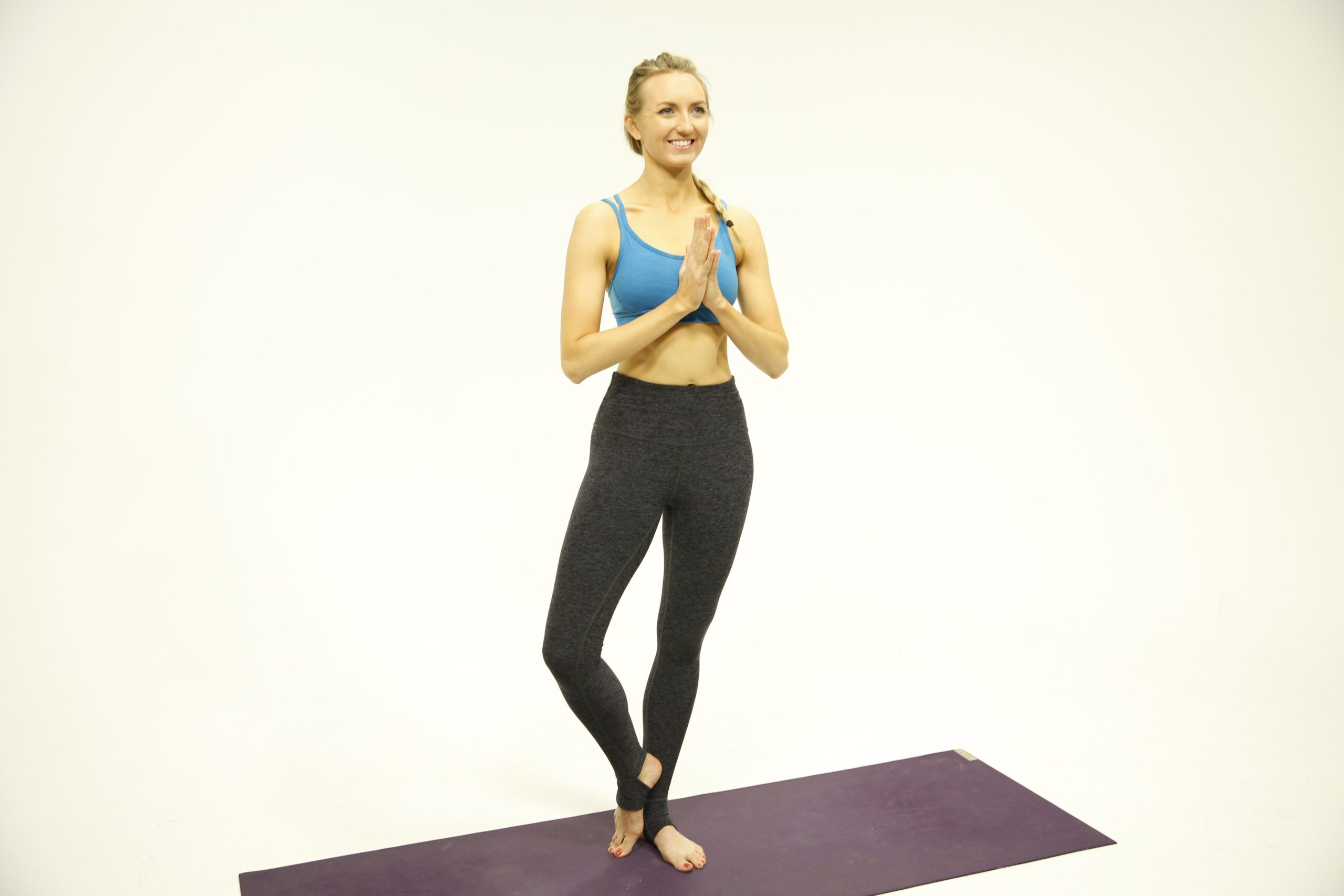Arthritis is a condition causing joint disease or joint pain, leading to inflammation, stiffness, and loss of mobility in the joints.
It’s pretty common and if you’ve had it, you know it’s no joke. It’s a serious public health concern. But guess what? Yoga can help.
With managing arthritis, lifestyle changes like increasing physical activity and physiotherapy are super important. This includes yoga!
Various yoga postures strengthen joint muscles and make the body more flexible, which helps with arthritis symptoms. Plus, practicing yoga helps reduce stress and you’d be surprised how much of a difference that makes.
In this article, I’ll go over the benefits of yoga for arthritis and the top yoga poses that will help the most with managing arthritis pain.
Benefits of Yoga for Arthritis
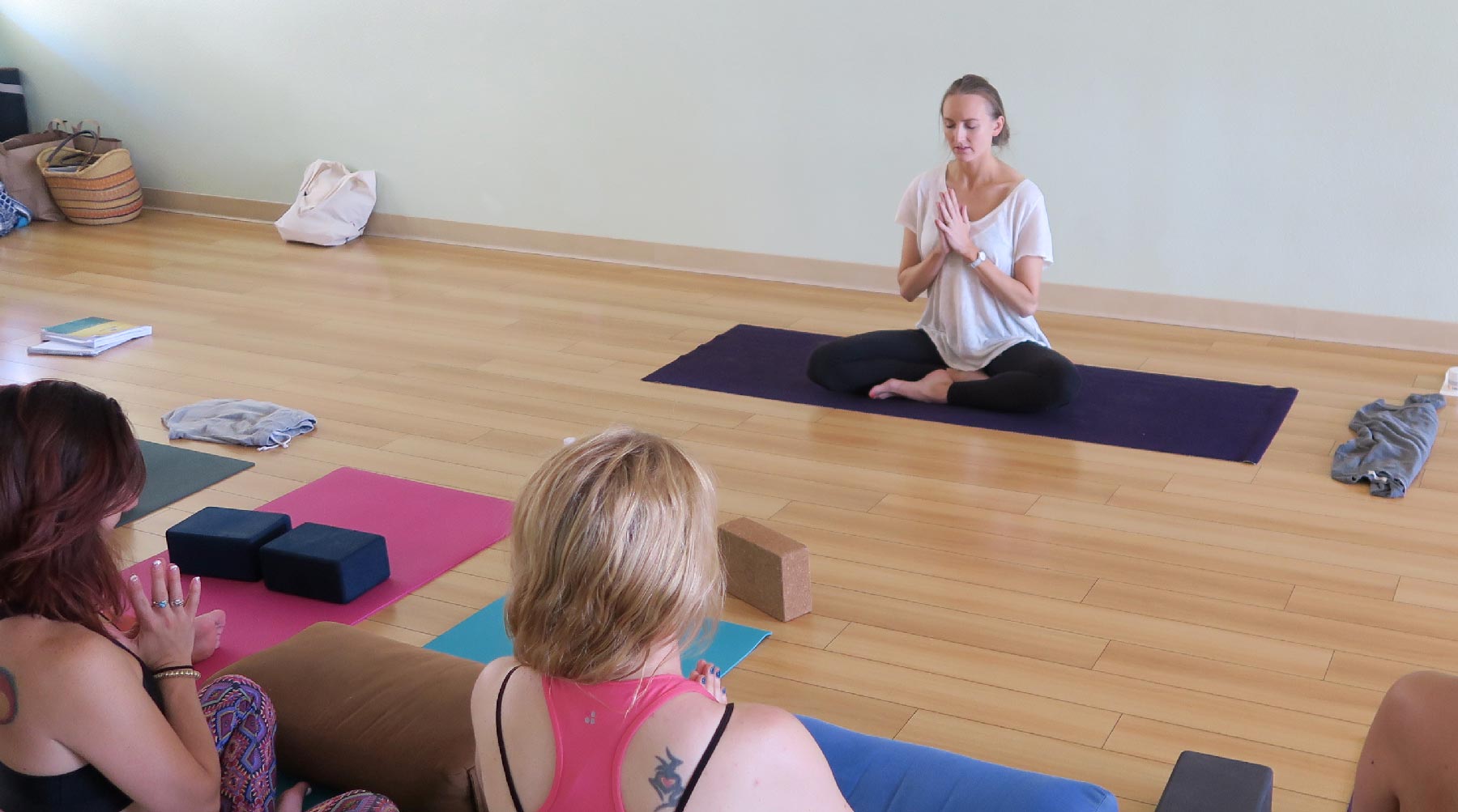
So why does yoga really benefit folks with arthritis? Let’s get into it!
First off, here’s a quick summary of all the benefits yoga often provides for folks with arthritis:
- Pain relief
- Muscle strength
- More energy
- Improved immune system
- Flexibility
- Reduced stress and depressive symptoms
- Increased well-being
Don’t just take my word for this – science backs me up!
Specifically, Johns Hopkins Arthritis Center designed and conducted a large, randomized, controlled trial of how yoga can help sedentary adults with arthritis. The study presented important evidence showing that yoga appears to be effective, safe, feasible, and enjoyable for people with both rheumatoid arthritis and osteoarthritis.
Physical Benefits
First of all, while everyone should be getting regular physical activity, it’s especially important for people with arthritis.
Why? Because people with arthritis often lose muscle strength, physical energy, and endurance. This is in part from their arthritis and part from the tendency for people with arthritis to be sedentary because moving hurts (totally understandable!). But since not moving tends to make things worse, it just starts a vicious cycle.
So how do we break the cycle? Yoga may be a good solution.
Yoga can be a nice gentle way to work regular movement into your life and keep up muscle strength and endurance.
Plus, by stretching the muscles, yoga can provide physical relief of symptoms around the affected joints.
Psychological Advantages
On the mental side of things, yoga (and exercise in general) can help reduce stress and depressive symptoms, promote better well-being, and improve immune functioning. These are all super important for people with arthritis.
Plus, the meditative side of yoga can play an important role in reducing stress and frustration that results specifically from arthritis pain and disability.
Related: An Epic List Of The Benefits of Yoga
Best Types of Yoga for Arthritis
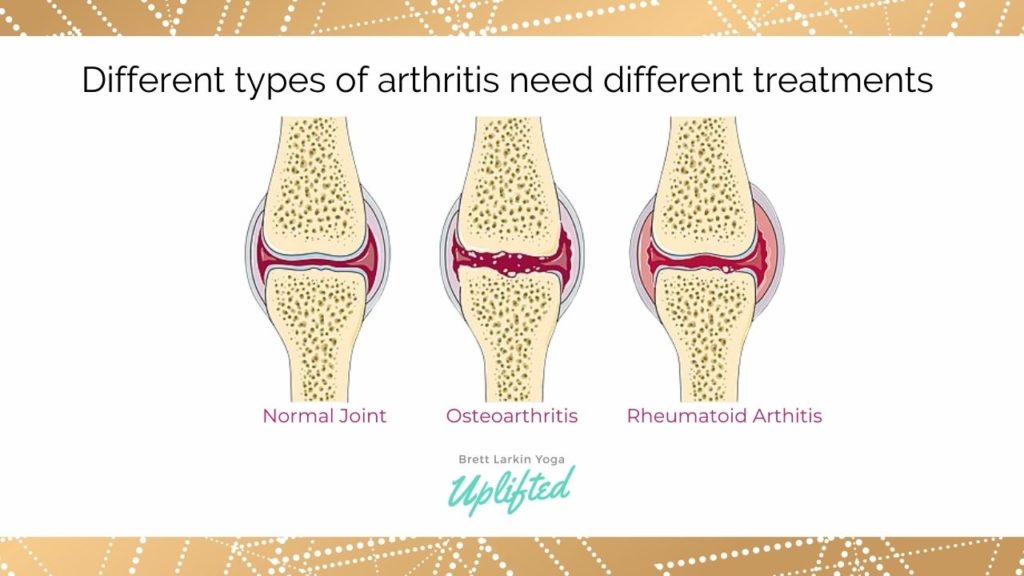
Iyengar Yoga
Iyengar Yoga is an ideal form of activity for people with rheumatoid arthritis, because of the practice’s emphasis on alignment protects joints. This method emphasizes breath work, precision, and alignment in each posture.
Many people use iyengar yoga as a supplement to other measures to treat musculoskeletal problems. Plus, the standing postures can stabilize the bones and muscles and balance them.
Hatha Yoga
All types of yoga involving postures are theoretically Hatha, but nowadays people tend to think of it as slower-moving poses where you hold each pose for at least a few breaths.
So why is it good for those who have arthritis?
Because it can be modified for joints with restricted movement. Arthritic individuals will have time to find out how to change poses that trouble their joints because the tempo is slower. And on the stress-relieving side – the deep relaxation time that finishes each class is perfect.
Restorative Yoga
This practice is all about relaxation. You hold poses for five or more minutes and use bolsters and blankets to make each pose as relaxed as possible.
It can be difficult for those with arthritis to relieve the stress that comes from chronic pain and a hyper-aroused nervous system. That’s where restorative yoga comes in. Restorative poses calm the nervous system and allow the body to truly let go.
Yoga Poses To Avoid With Arthritis
If you have arthritis, you should avoid poses that can potentially cause any flare ups. For some, this may include poses that require you to balance on one foot or bend your joints, such as your knees, more than 90 degrees. For others, it may be challenging to hold postures for extended periods of time.
Some yoga types, such as Kundalini or Ananda, may involve lengthy meditation or breathing exercises that could be difficult for someone with arthritis to sit through.
Keep in mind, there are a ton of different forms of arthritis and they often have slightly different treatments. The asanas I’d recommended for those with osteoarthritis are different from the poses I’d recommend for those with rheumatoid arthritis.
Holding poses for a long time to strengthen static muscles is great for osteoarthritis. On the other hand, for rheumatoid arthritis you don’t want to be holding poses for that long. People with moderate to severe rheumatoid arthritis should avoid high-intensity yoga postures, and prolonged immobility in seated or lying positions.
Now before I get into the poses, remember: arthritis is no joke. Even with these yoga pose suggestions, it’s super important to learn and practice them under the supervision and guidance of a yoga instructor or a yoga therapist.

Top Yoga Poses for Arthritis
These yoga postures will help you manage the symptoms of arthritis. Because everyone experiences arthritis a little differently, some with pain in their wrists and others with pain in their feet, it’s important to pay attention to your body’s signals in these postures. If anything feels uncomfortable or painful, try the variation. If that is still uncomfortable, then skip the pose.
1. Warrior Pose II (Veerabhadrasana II)
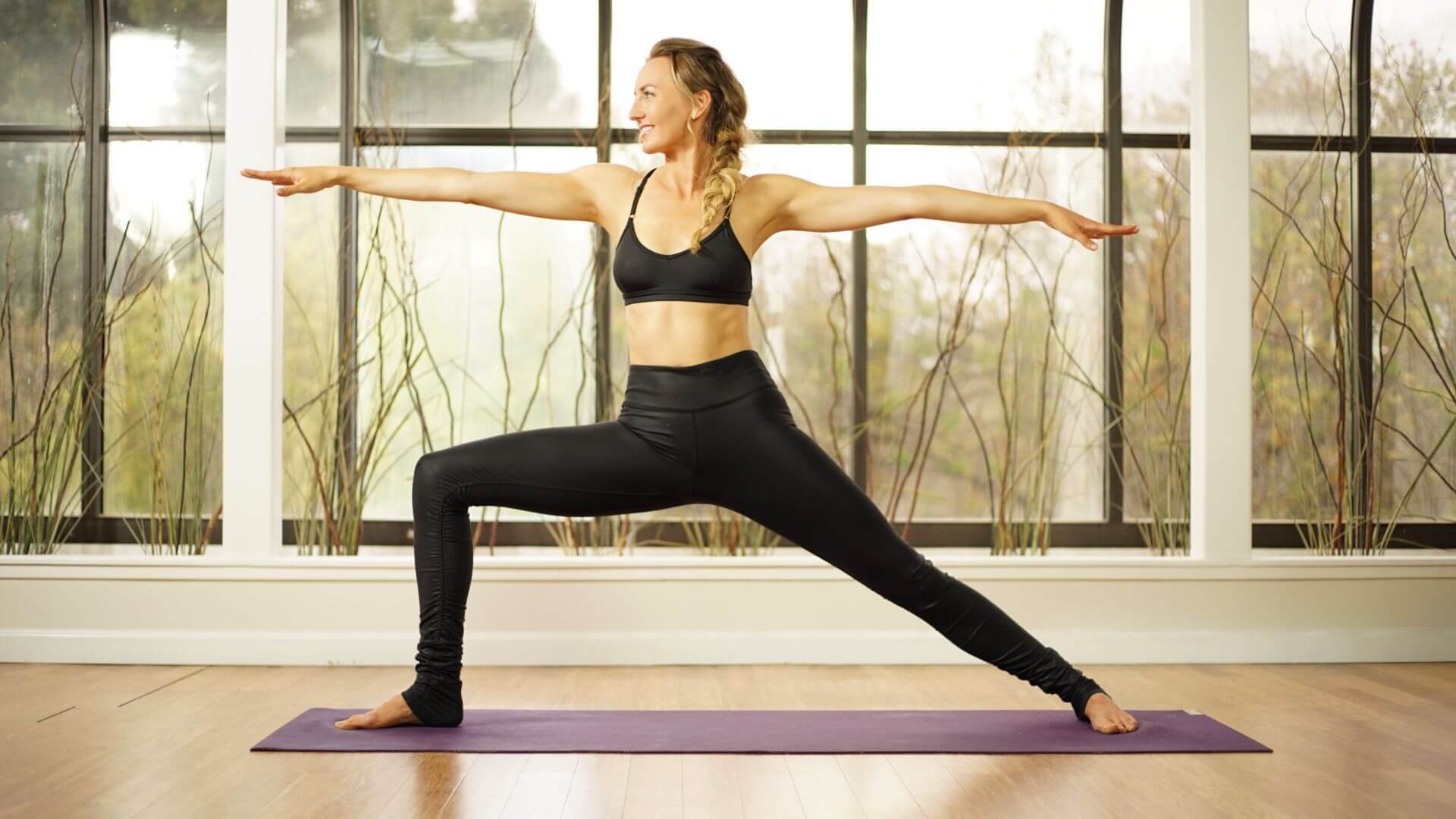
- Step 1: Stand straight with your legs wide apart by a distance of at least 3-4 feet.
- Step 2: Turn your right foot out by 90 degrees and left foot in by about 15 degrees.
- Step 3: Lift both arms sideways to shoulder height with your palms facing downwards.
- Step 4: Breathing out, bend your right knee.
- Step 5: Turn your head and look to your right. Settle down in the yoga posture while stretching your arms further.
- Step 6: Make a gentle effort to push your pelvis down. Keep breathing as you go down.
- Step 7: Breathing in, come up. As you exhale, bring your hands down from the sides.
- Step 8: Repeat the yoga posture for the left side (turn your left foot out by 90 degrees and turn the right foot in by about 15 degrees).
Variations: Beginners may find it difficult to keep the back heel grounded and the lower back lengthened in this pose. As a variation, raise the back heel on a sandbag, pillow, yoga block, or the wall. Widen your stance if it is difficult to balance.
Benefits: This pose strengthens the arms, shoulders, thighs and back muscles, all in one go. The warrior pose provides an amazing stretch to all the muscles and tendons and is truly effective against different types of arthritis.
2. Child’s Pose (Balasana)
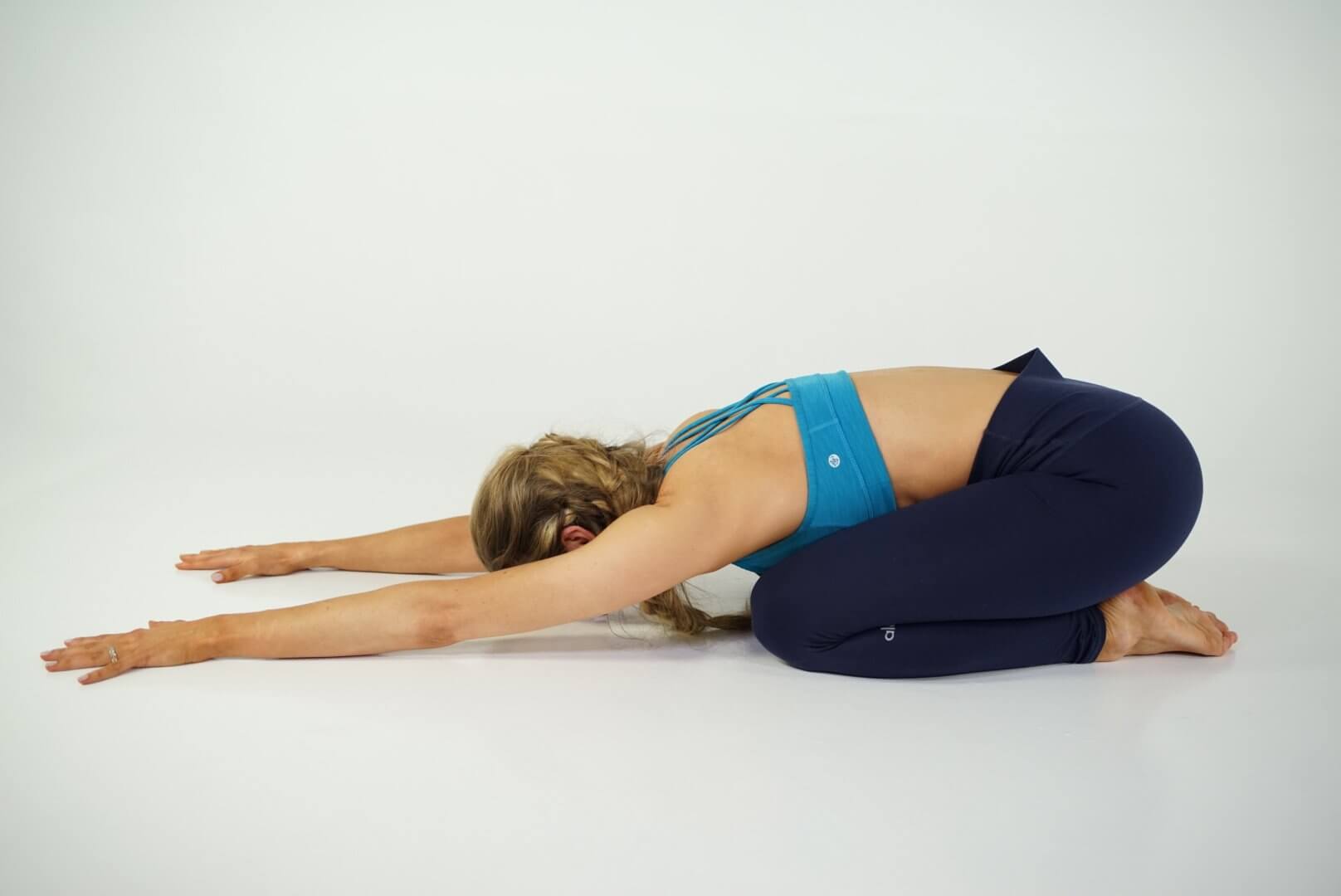
- Step 1: Start kneeling on your mat sitting on your heels.
- Step 2: Raise your arms over head and take a deep breath in.
- Step 3: Spread your knees as wide as your mat
- Step 4: Bring your belly to rest between your thighs and root your forehead to the floor. Relax the shoulders, jaw, and eyes.
Variations: If you don’t feel comfortable doing Balasana face down, then reverse this flexible asana by coming on your back. All you have to do is lie down and hug your knees against your stomach, with your hands resting on your shins or your thighs on your back.
Benefits: The asana stretches and strengthen the back, relieves pain, strengthens the knee ligaments and keeping the joints healthy.
3. Seated Spinal Twist (Ardha Matsyendrasana)
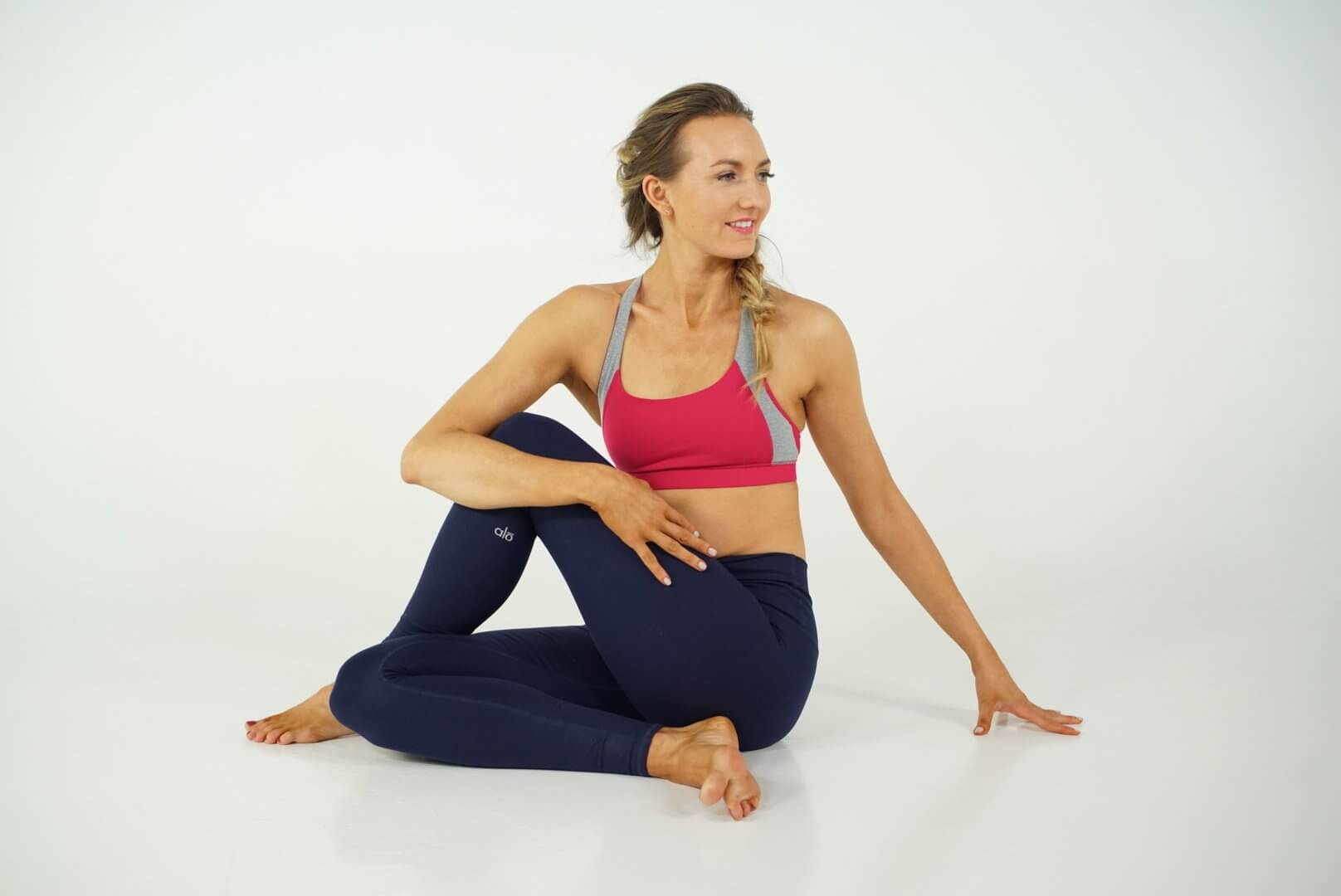
- Step 1: Sit with your legs extended and bend your right knee up.
- Step 2: Place your right foot on the outside of your left leg and sit up straight and tall.
- Step 3: Hug your right knee in toward your chest.
- Step 4: Gently twist to the right from the hips, looking over your right shoulder.
- Step 5: Hold for five breaths.
- Step 6: Relax, then repeat on the other side.
Variations: Sit with your right leg outstretched and left leg bent with the left foot under your right thigh or butt (depending how flexible you are). Bend your right knee, and place your right foot at the outer edge of your left thigh.
You can also sit on a blanket, bolster, or chair.
Benefits: Ardha Matsyendrasana improves posture and spinal mobility. It helps to increase the flexibility of the spine which further help to relieve stiffness between the vertebrae and prevent back pain.
Make your yoga practice 2x more potent in HALF the time (usually $47) FREE 👇
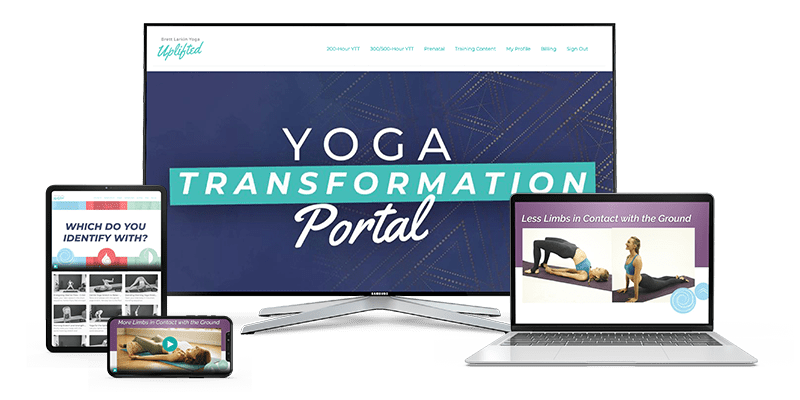
Make your yoga practice 2x more potent in 1/2 the time. FREE two-hour Yoga Transformation Portal (usually $47) [Claim it Free Here]

4. Tree Pose (Vrikshasana)
- Step 1: Stand tall and straight with arms by the side of your body.
- Step 2: Bend your right knee and place the right foot high up on your left thigh.
- Step 3: Make sure that your left leg is straight. Find your balance.
- Step 4: Once you are well balanced, take a deep breath in, gracefully raise your arms over your head from the side, and bring your palms together.
- Step 5: Look straight ahead in front of you. Ensure that your spine is straight.
- Step 6: Keep taking in long deep breaths.
- Step 7: With slow exhalation, gently bring down your hands from the sides. You may gently release the right leg.
- Step 8: Stand tall and straight as you did at the beginning of the posture. Repeat this pose with the left leg off the ground on the right thigh.
Variations: This pose can be performed with the arms in various positions. Once the forward knee is bent, swing your arms around behind your torso and clasp your hands. Stretch your hands away from the back torso and lift your chest. To leave the pose, reach back with your hands and, with an inhalation, pull yourself up, straightening the front knee.
If it is difficult to balance, you can place your lifted foot on the ground with your heel resting on the ankle of your planted foot. Gently press the knee backward so that the hips open.
Benefits: This pose leaves you in a state of rejuvenation. It stretches and invigorates your legs, your back and arms.
5. Chair Pose (Utkatasana)
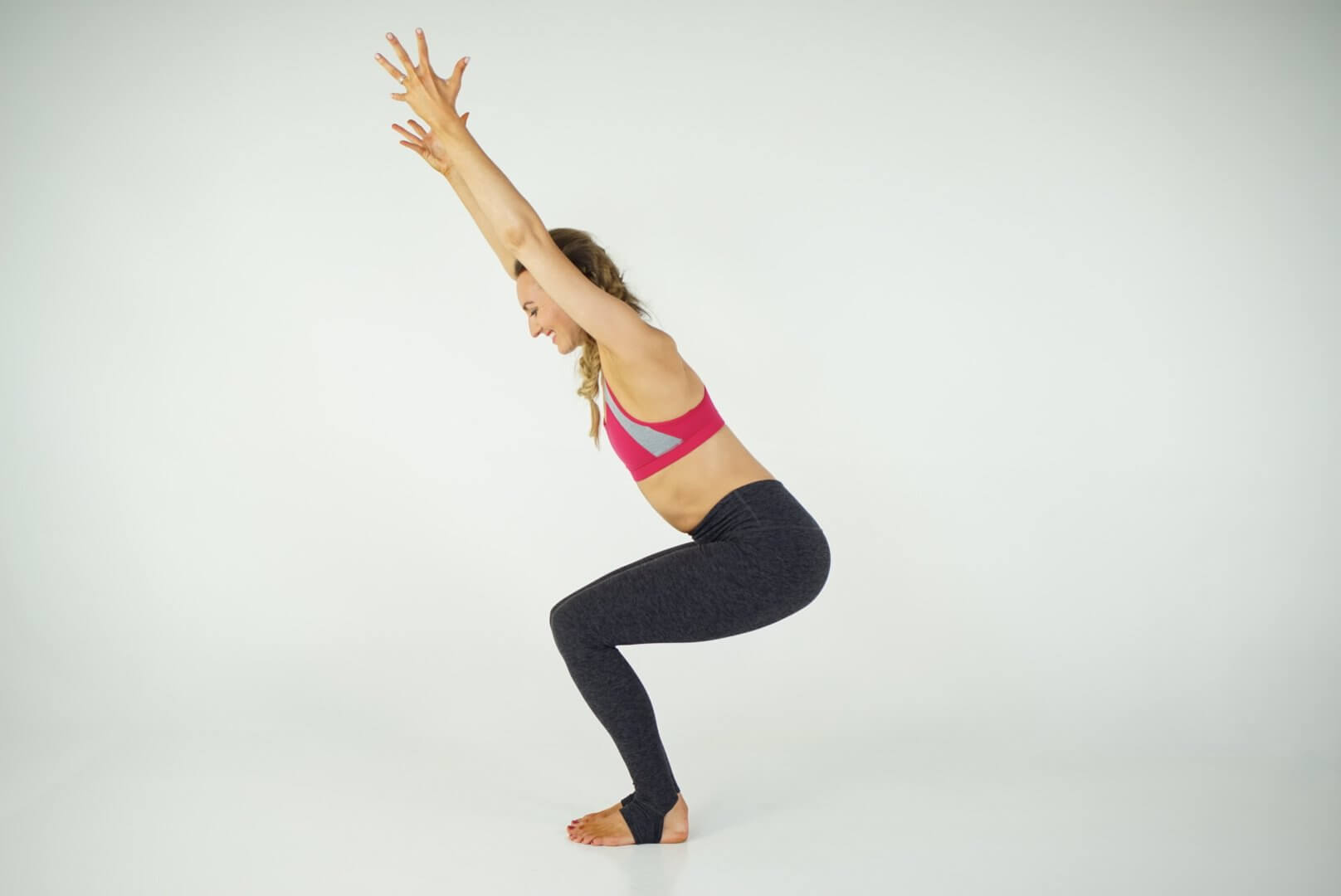
- Step 1: Stand with your feet facing forward, shoulder-width apart.
- Step 2: Raise your arms over head and take a deep breath in.
- Step 3: Lower your arms halfway down, and squat as if you were sitting in a chair.
- Step 4: Make sure your feet are facing forward, knees over the ankles.
Variations: If shoulder range of motion is limited, keep your arms by your side to modify and work around your limitations.
Benefits: Improves balance and lower extremity strength. This yoga pose is extremely beneficial for knee health.
6. Triangle Pose (Trikonasana)
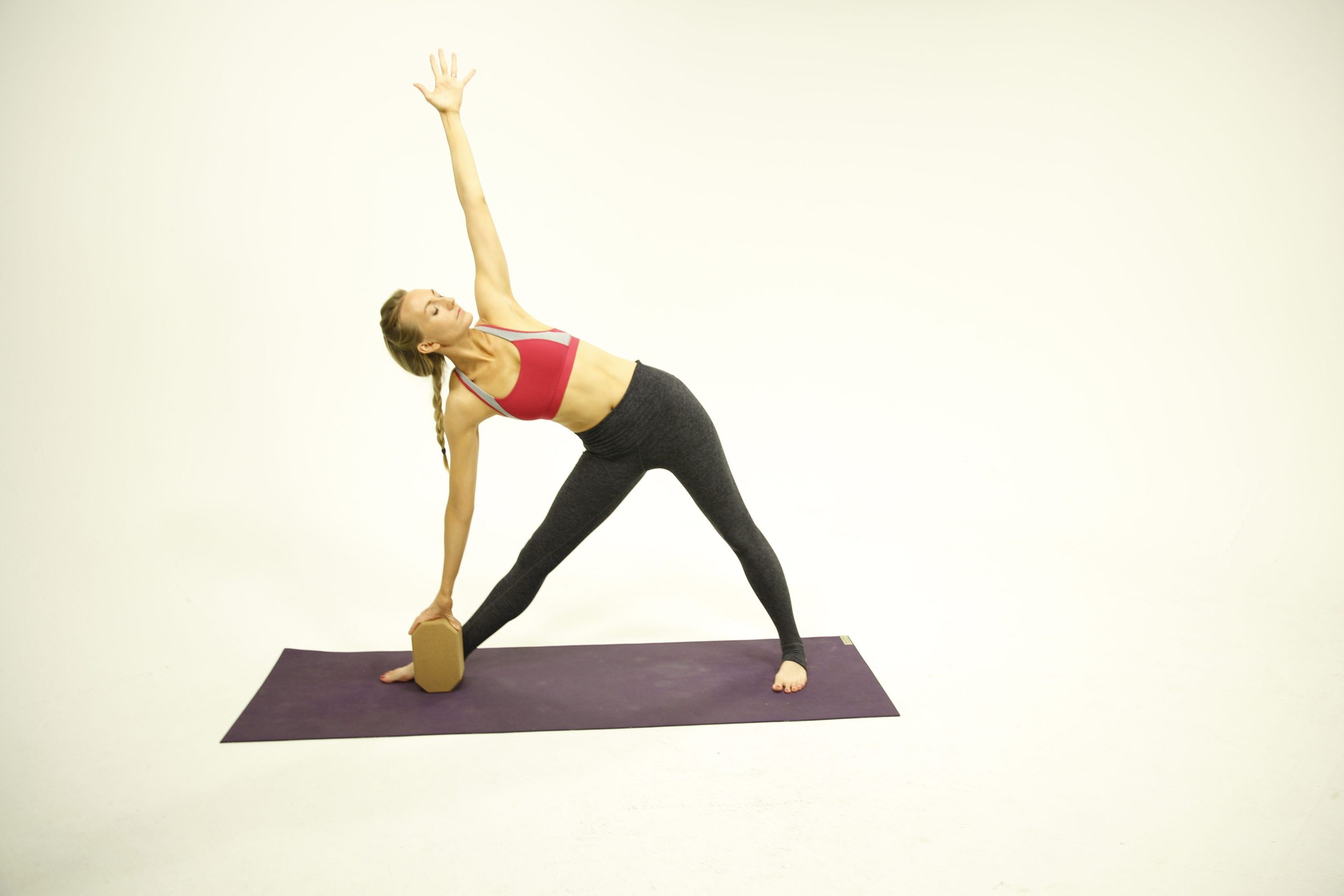
- Step 1: Stand up straight and spread your legs apart.
- Step 2: Turn one foot outwards so that your toes are facing sideways and turn your other foot slightly inwards.
- Step 3: Bring your arms up stretching out at shoulder height. Bend your hips and lower one arm toward the leg that has been turned outward, allowing the other arm to lift toward the sky.
- Step 4: Breathe in and out softly and allow your body to relax.
- Step 5: Hold this pose for five breath counts. Now, exhale and come up to the standing position. Repeat this on the other side.
Variations: Change the base in this variation by staggering the legs and using a wall. Line the short edge of your mat up against a wall first. Then shift your feet apart, flush the back edge of your back foot with your mat’s back right corner and the wall and the front foot’s inner edge a few feet forward and flush your mat’s right edge. Using a block below your lower arm, straighten your upper arm, and look up.
Benefits: Trikonasana can often relieve pain for any disorder in the neck and shoulder. According to yoga practitioners, this yoga pose is perfect for people who suffer from stiff joints, perfect to relieve arthritis.
7. Kundalini’s Hero Pose (Veerasana/Virasana)
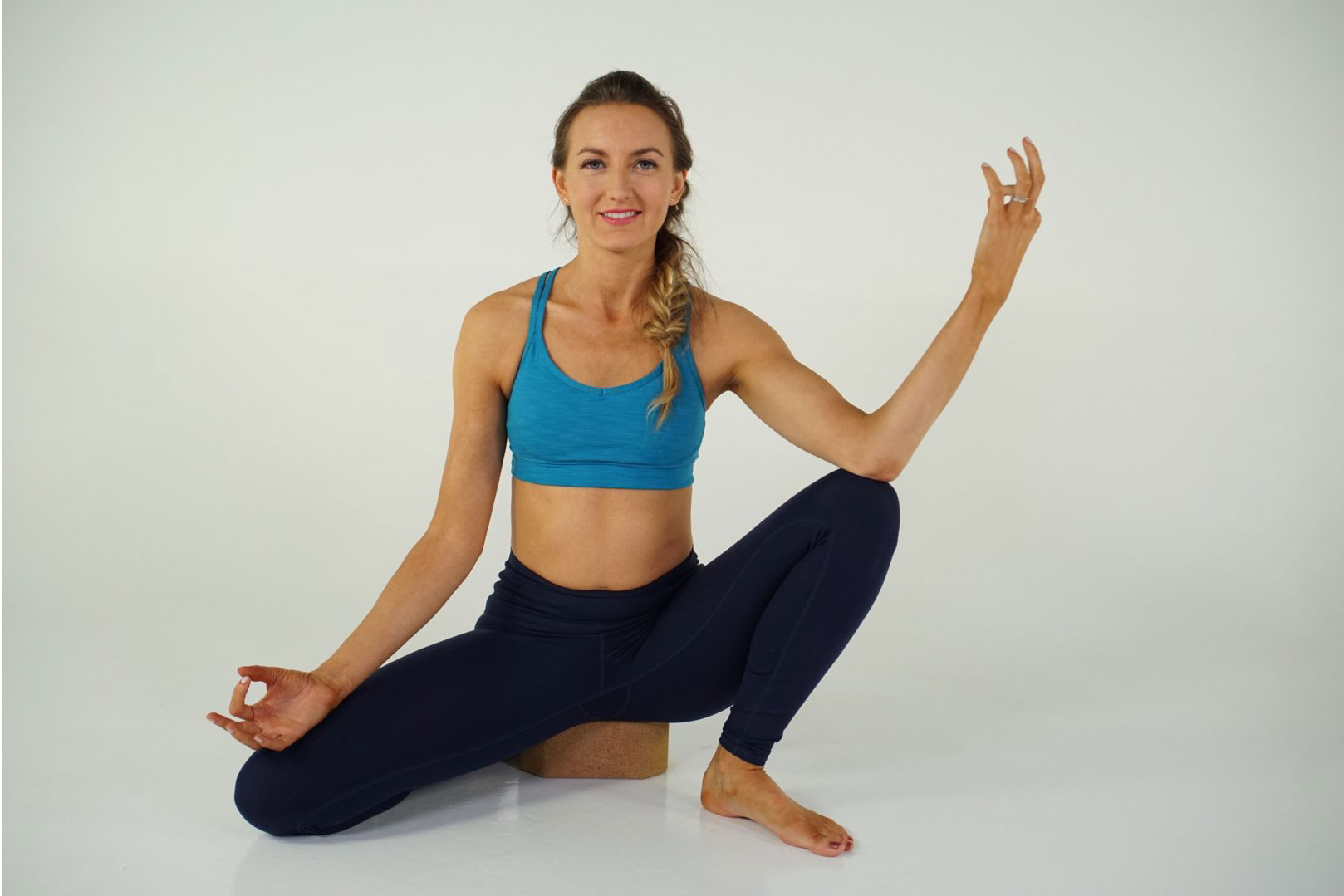
- Step 1: Sit comfortably on your yoga mat.
- Step 2: Extend your legs outwards while keeping your back straight.
- Step 3: Bend your left leg at the knees and place the toes of the foot under your left buttock.
- Step 4: Bend your right leg at the knees and place the sole of that foot on the thigh of the left leg.
- Step 5: Extend your hands in front of you, then raise them over your head. Bend them at the elbow and join your palms. Bring them down together and place your wrists on your head.
Variations: A variation of Veerasana is to start on your knees with your feet and knees hip-width apart. Slide a yoga block the wide way between your ankles and sit on the block. Close off the space between your knees and lightly spread your toes, pressing them evenly down into the mat.
Benefits: This yoga posture is great to tone the muscles of the thighs, hips and arms. It also helps improve circulation around the knee, ankle and elbow joints and helps to strengthen them. The increased circulation helps bring the joint back into equilibrium making it more flexible.
8. Cow Face Pose (Gomukhasana)
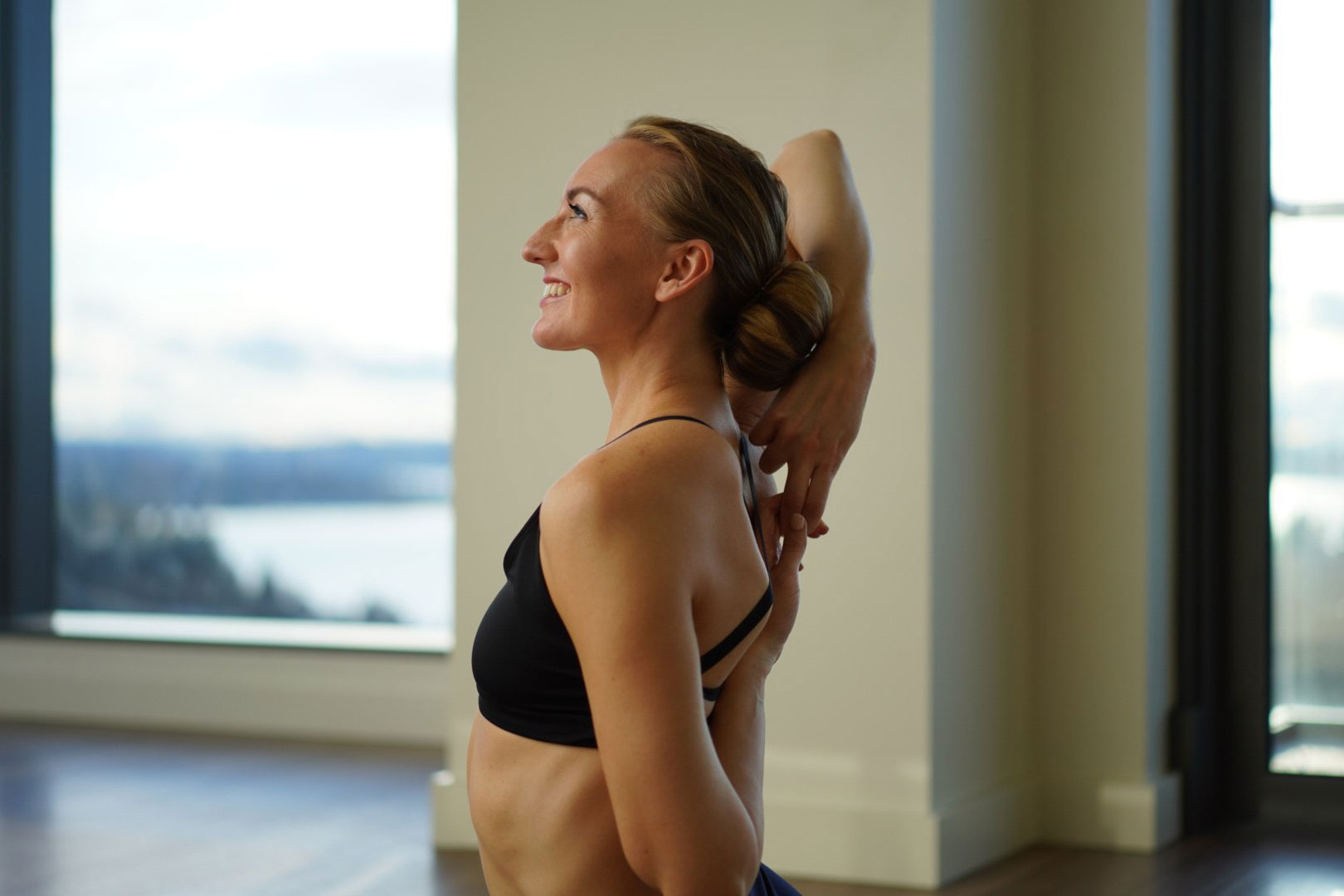
- Step 1: Bend your knees and place them on your yoga mat, so that your upper body is upright and your knees take all your weight.
- Step 2: Make sure your toes are pointing downwards and are driving towards the ground.
- Step 3: Bend your right arm at the elbow and place it behind your back.
- Step 4: Make sure your fingertips are pointing upwards and are close to your spine.
- Step 5: Raise your left arm above your head and bend it at the elbow above your head.
- Step 6: Reach your left hand down the nape of your neck and try to grasp your right hand.
- Step 7: Breathe normally and get out of this pose by first sitting down and then bringing your hands back to their normal position.
Variations: This pose is ideally done while putting all your weight on your knees. But if you suffer from severe arthritis, you can sit in padmasana to do this pose.
Benefits: This yoga pose is perfect for your fingers, elbows, shoulders, neck, spine and hip joint. It also aids in the development of synovial fluid (fluid present between the joints) due to its inherent ability to increase circulation in the joints, which helps to lubricate aching joints and decreases friction.
9. Cat Pose (Marjariasana)
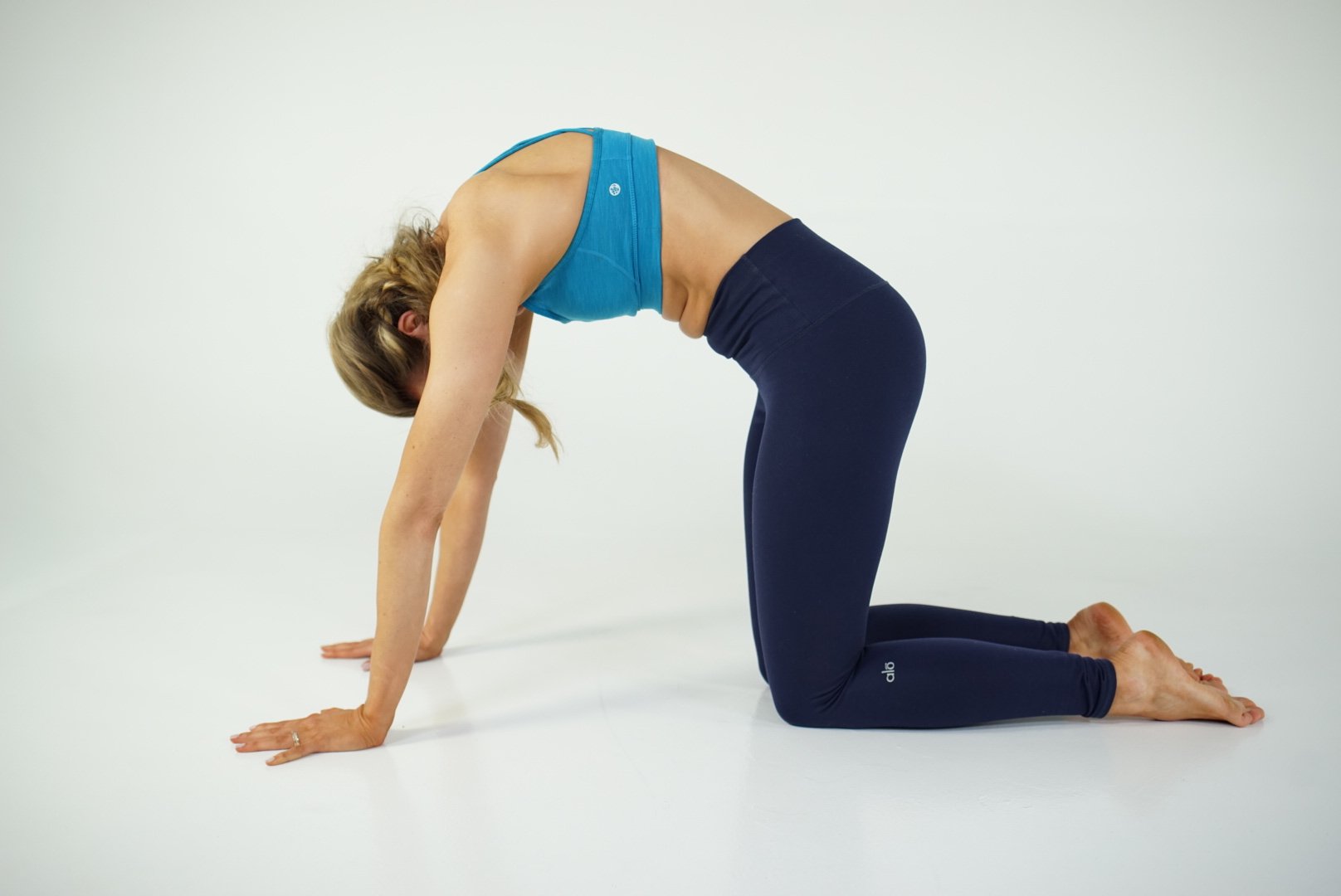
- Step 1: Come onto all fours in a tabletop position.
- Step 2: Keep your arms perpendicular to the floor, with the hands directly under the shoulders and flat on the ground; your knees are hip-width apart directly under your hips.
- Step 3: Look straight ahead. On an exhalation, draw the chin in, engage the core, and hug the belly up toward your spine you round the back. Push down through your hands. Hold the Cat’s pose and take a deep, long breath.
- Step 4: To come out, slowly lower the spine back to a neutral tabletop position.
Variations: Bringing the spine back to a neutral position, engage through the core and hug the belly up toward the spine. Stretch the right leg behind you, press through the foot’s heel, keep the leg in line with the body, not lifting too high or falling too low. The left arm extends out as you find your equilibrium, keeping it in the same line as the body, extending through the fingertips. As you balance, breathe here.
Benefits: This pose engages the full body. It helps with flexibility and strength for the entire body, including the spine, wrists and shoulders.
Next Steps
- Check out my YouTube channel and find some yoga classes that you can try out for yourself!
- Download my Yoga Calendars for an at-home practice, guided by me on YouTube!
- Join Uplifted for exclusive content that you can access right from the app. Take a deep dive into your practice with me this year!
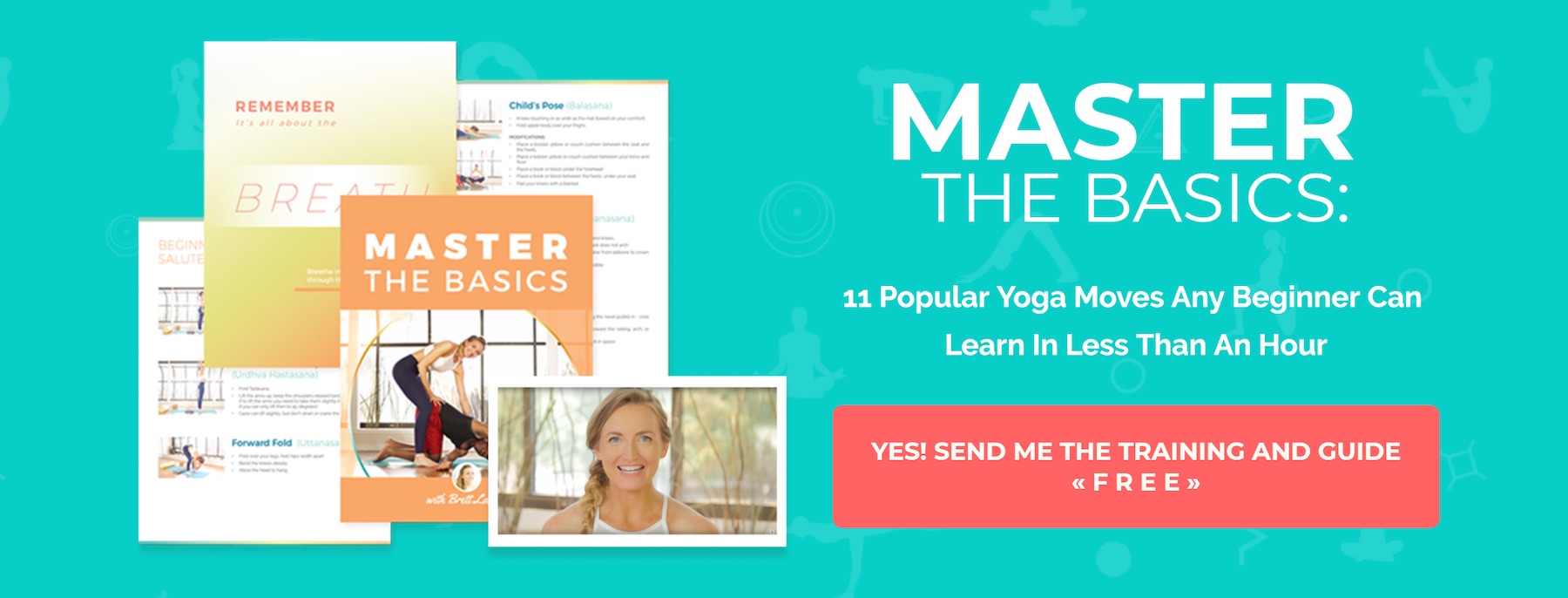
Learn how to do 11 of the most popular yoga poses correctly. Free video + PDF download.

Find more yoga sequences by benefit.
YOU MIGHT ALSO LIKE
- How to Teach Somatic Yoga: A Practical Guide for Instructors
- The Best Somatic Exercises for Grief: Find Healing Through Movement
- The Best Somatic Exercises for Anger Management and Emotional Release
- Authentic Pathways: Connecting With Higher Self for Inner Peace
- Yoga to Reconnect with Yourself: 5 Essential Practices for Inner Peace
- Yoga for Connection: 10 Poses to Deepen Relationships and Bonding
- Yoga To Connect With Your Body For Mind-Body Harmony
- Yoga to Connect with Feminine Energy: 5 Transformative Practices
- Yoga to Connect with Your Heart: 3 Poses for Emotional Balance
- Myofascial Release Yoga: Unlock Tension and Improve Flexibility
- 6 Hip Openers For Emotional Release
- Office Yoga: 10 Poses You Can Do Right Now
- Ayurveda Food Combining: The Key to Balanced Digestion
- Yoga For Grief: 8 Yoga Poses For Support
- Yoga for Vata Dosha: Practice Poses and Tips
Learn how to do 11 of the most popular yoga poses correctly. Free video + PDF download.


